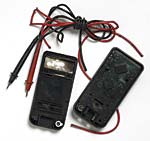Canadian Contractor Kicks its Program Up a Notch
By protecting its employees from electrical dangers on the job, Syntech Enerflex leads the way for Canadian employers
- By Duane Smith
- Jun 06, 2007
 AS dangerous jobs go, the world of working with electricity
might not seem the most romantic. Unlike firefighting or
law enforcement, electricians are not often featured in
blockbuster movies as heroic, brave saviors of the street. But
working with electricity can be comparatively dangerous, and the
injury rate for electricians is high. People who work on or near
electrical sources have to be extremely careful to avoid electrocution
and arc flash incidents.
AS dangerous jobs go, the world of working with electricity
might not seem the most romantic. Unlike firefighting or
law enforcement, electricians are not often featured in
blockbuster movies as heroic, brave saviors of the street. But
working with electricity can be comparatively dangerous, and the
injury rate for electricians is high. People who work on or near
electrical sources have to be extremely careful to avoid electrocution
and arc flash incidents.
An arc flash is a devastating outburst of energy that can range
in temperature from 2,800 to 19,000 degrees Celsius. It sends a
concentrated wave of radiant energy, hot gases, and melting metal
outwards from its source. The effects on those nearby can include
death, radiation burns, brain damage, and hearing and vision loss.
The arc flash affects everyone in the immediate zone, and flying
shrapnel from the blast can even harm those at a distance.
In order to prevent such a tragedy, more and more companies
are working to prevent arc flash incidents. In Canada, the efforts
are still quite new because the awareness of the dangers of arc flash
is not as widespread as it is in the United States. But one company,
Syntech Enerflex in Alberta, is taking the initiative to protect its
employees from arc flash now.
Syntech Enerflex is one of the largest electrical and instrumentation
open shop contractors in western Canada. It has developed
a brand-new safety program targeted at reducing the likelihood of
an arc flash incident. In doing so, Syntech Enerflex is leading the
way toward increased awareness of the phenomenon in Canada.
The program hinges on the adoption of a new minimum standard
for digital multimeters (DMMs). New DMMs, purchased by
Syntech Enerflex but owned by the individual workers, were
needed because the previous
DMMs were not of the high
quality the company needed,
said Larry Johnson, Syntech
Enerflex’s health, safety, and
environment (south) coordinator.
So they sought out
new products that came
with comprehensive educational
tools. Most importantly,
said Johnson, they
wanted a tool that was
proven to be safe and effective
in the workplace.
“One of the key reasons
[for the new units] was
Canadian Standards Association
approval. Our previous
meters were not
CSA-approved, and even
though the tool was built to
standards, it was not tested, and we felt this was one of the most
important aspects to consider when purchasing a meter,” Johnson
said. He added it was also important that CSA independently verifies
that the test tools meet the requirements of International
Electro-Technical Commission (IEC) 61010, which is the basis
for CSA C22.2 No 61010-1-04 (Safety Requirements for Electrical
Equipment for Measurement, Control, and Laboratory Use Part 1:
General Requirements).
70E is Program’s Foundation
But finding and buying the new meters was only the first step. A
meter is only as good as the person operating it, so Johnson and his
team set forth to investigate everything they could about arc flash.
Fluke provided part of the research materials in the form of
training seminars and training videos. The other half of the
research delved into the standards set in the United States that are
specific to arc flash.
“Once we determined there was an existing meter that was
tested and met CSA standards,” said Johnson, “we learned more
about arc flash and National Fire Protection Association 70E Standard
for Electrical Safety in the Workplace. It’s a standard in the States that talks about how to mitigate the
risk around arc flash. We put it to practice
around here.”
Together with the meter training tools
and the information on NFPA 70E, Syntech
Enerflex’s safety program was devised.
The centerpiece of the policy is the DMM
pre-use inspection procedure. It has 10
steps and focuses on making sure the test
tool is in good condition, it is right for the
job, and the meter and leads are functioning
properly (see “Syntech Enerflex
Safe Work Practice: Multimeter Pre-Use
Inspection,” page 83).
The third component to Syntech Enerflex’s
multimeter safety program is called
Energized Work Authorization. It outlines
the protocol employees have to follow
when testing energized equipment. The
protocol was based on NFPA 70E, as well;
this standard requires the calculation of a
flash protection boundary, inside which
workers must be protected with personal
protective equipment, such as an arc flash
faceshield, eye and hearing protection,
insulated hand tools, insulated gloves, and
fire-resistant clothing.
Johnson said feedback about the program
from the employees has been good.
“Most of the employees have always
checked their meters before they use them,
but the new procedure lays it out better for
them,” he explained. “It’s their own meter,
and they look after it as an important tool.
They use these ideas to kick it up a notch.”
One of the most important elements of
this new training is how it promotes respect
and awareness of the dangers arc flash poses
to electrical workers. They form the critical
bridge between electrical power and the
society and businesses that depend on it.
Their safety is important not just to Syntech
Enerflex, but also for the trade as a
whole. Electricians do not need glamour;
they need a safe and healthy workplace in
which to perform their jobs.
This article originally appeared in the June 2007 issue of Occupational Health & Safety.